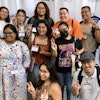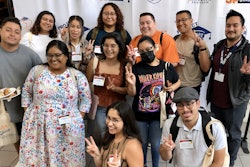TOPPENISH, Wash. – A fire at a private, liberal arts college in Washington state has left school officials scrambling to ensure academics aren’t adversely affected and grateful that more wasn’t lost for the largely minority students who make up the school’s student body.
Heritage University serves a unique mission in central Washington’s Yakima Valley, an agricultural belt home to thousands of acres of wine grapes, tree fruit and row crops: two-thirds of its 1,200 students are Hispanic or Native American and most are the first members of their families to attend college.
“This place is special,” longtime English teacher Janet Castilleja said as she looked at the remains of Petrie Hall, built in 1926 as an elementary school before becoming the university’s first building and home to a cafeteria, bookstore, classrooms and computer servers. “It’s pretty hard, kind of like losing an old friend.”
The Yakima Valley has long been the center of Washington’s fruit bowl, with miles of orchards devoted to apples, cherries, pears and other tree fruit. Vineyard plantings have increased right along with wine production. Washington is the nation’s No. 2 producer of premium wine behind California, and hops and mint fields surround the school.
Founded in 1982 by a Roman Catholic nun on the Yakama Indian Reservation, Heritage was viewed as a vital service for educationally underserved tribal members and the families of farm workers who labor in agriculture.
Poverty is rampant in those populations. The rate of adults who obtain a college degree in the region is less than one-third the national rate of higher education and trails other low-income areas, such as Appalachia. Many graduating high school seniors don’t want to leave their families or can’t afford to move elsewhere to pursue college.
“We have a lot of talented people in this valley, and they had no opportunity for a four-year degree,” said Sister Kathleen Ross, the school’s founder. “The theme for the school was that it has to be accessible, of high quality, and it has to take into account the multicultural nature of our valley.”















